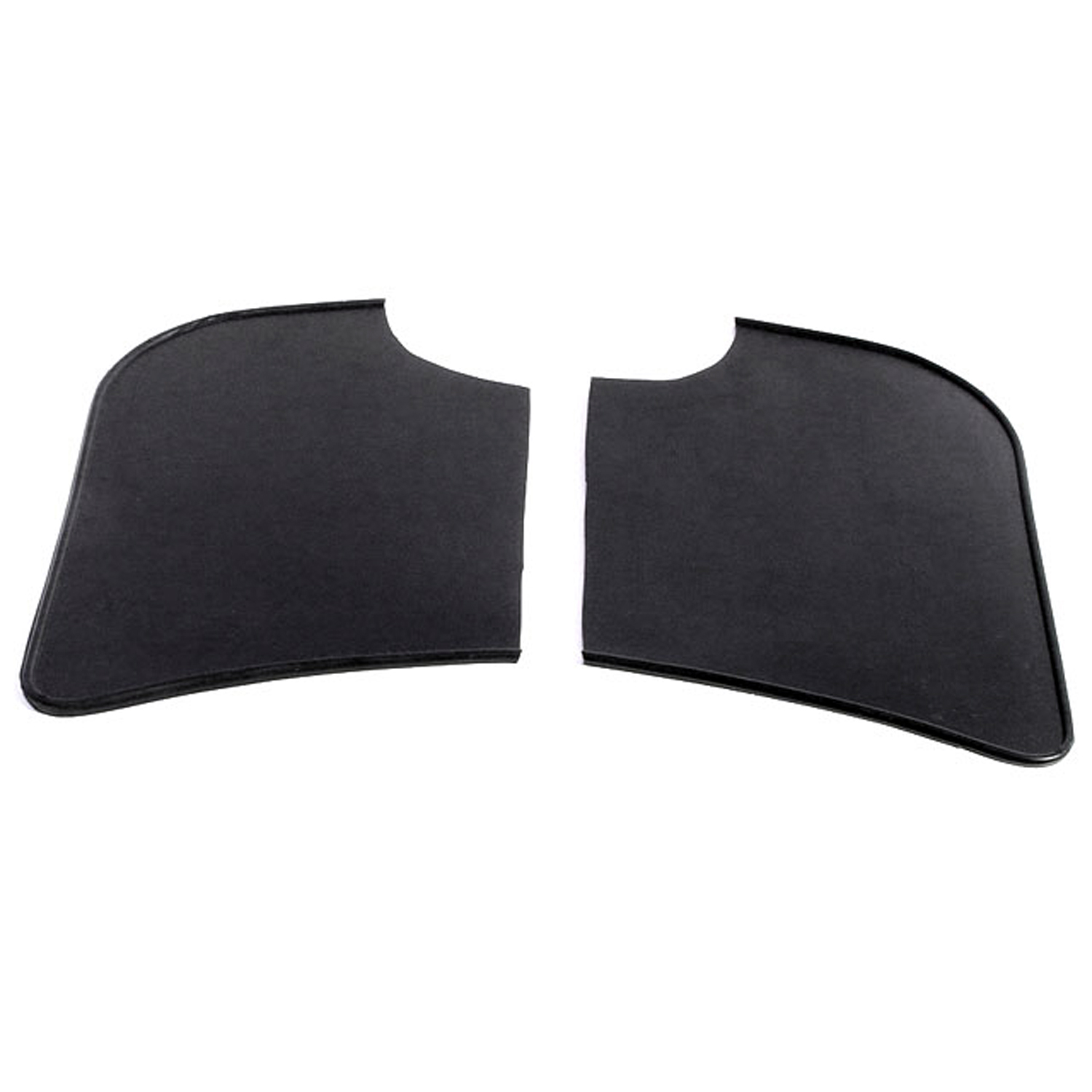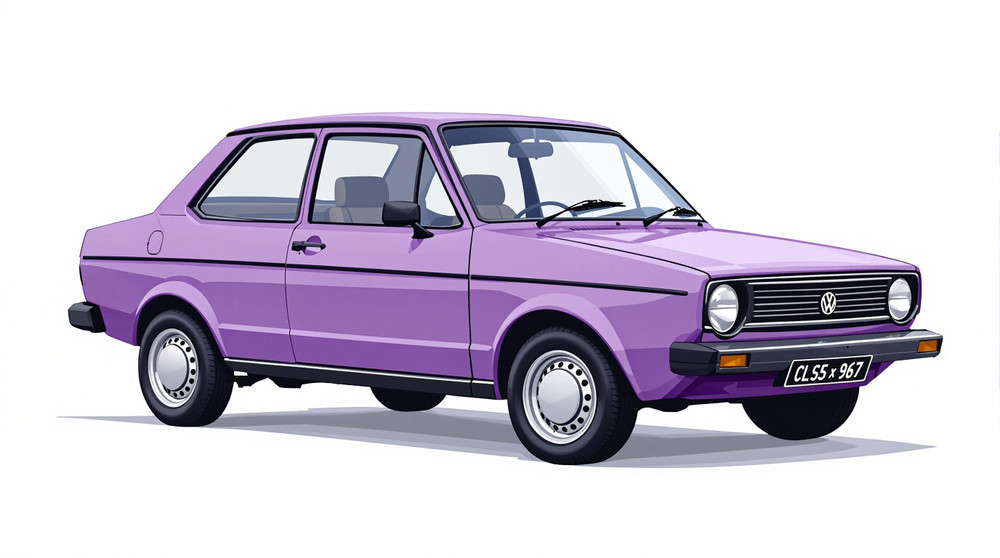Image of 1979 Volkswagen Dasher, Note: These illustrations use artistic license and may differ from actual historical models.
Performance Metrics
Fundamental Metrics
Emotional Appeal
MMP Rating
| Engine Specifications | |
|---|---|
| Engine: | Inline 4 |
| Displacement: | 1.5L - 1.6L |
| Horsepower: | 70 - 78 hp |
| Torque: | 80 - 85 lb-ft |
| Compression Ratio: | 8.2:1 |
| Ignition System: | Distributor |
| Cooling System: | Water-cooled |
| Performance Specifications | |
| 0-60 Time: | 14 - 16 seconds |
| 1/4 Mile Time: | Estimated at 19 - 21 seconds |
| Top Speed: | 90 - 95 mph |
| Transmission and Drive | |
| Drive Type: | Front-wheel drive |
| Transmission Type: | 4-speed manual or 3-speed automatic |
| Fuel and Efficiency | |
| Fuel System Type: | Carburetor |
| MPG: | 25 - 30 mpg |
| Dimensions and Brakes | |
| Brakes: | Front disc, rear drum |
| Wheelbase: | 97.3 inches |
| Weight: | 2,200 - 2,400 lbs |
Note: Specifications for classic cars are given to the best of our ability, considering the limited and variant data available.
1979 Volkswagen Dasher: A Testament to German Engineering
The 1979 Volkswagen Dasher stands as a testament to the innovation and practicality that characterized late 70s automotive design. Born from the reputable German manufacturer Volkswagen, this vehicle emerged during a period of transition for the automotive industry, with manufacturers grappling with the aftermath of the oil crisis and the push towards more fuel-efficient cars. The Dasher, known as the Passat in other markets, offered a unique blend of economy and style that captured the attention of drivers worldwide. A notable moment in its history was its role in pioneering front-wheel-drive technology for Volkswagen in North America.
Design and Innovation
The exterior styling of the 1979 Volkswagen Dasher was both sleek and functional, with clean lines that exuded a European flair uncommon in American cars of that era. Inside, occupants were greeted with a no-nonsense dashboard and comfortable seating upholstered with materials that have stood the test of time. Technologically, it boasted features like electronic fuel injection – a novelty at the time – which contributed to its efficiency and reliability. The Dasher came in an array of colors, with Mars Red and Diamond Silver being particularly popular among enthusiasts. Body style options included two-door and four-door sedans, a three-door hatchback, and a five-door wagon, with the latter becoming an iconic symbol of practicality.
Historical Significance
The Dasher's impact on automotive design was significant; it helped popularize front-wheel drive in the North American market, setting a precedent for future vehicle designs. Its blend of functionality and efficiency set it apart from contemporaries who were still producing larger, less economical vehicles. The Dasher's legacy is evident in how it paved the way for subsequent generations of Volkswagens that continued to emphasize practical design and technological innovation.
Performance and Handling
Performance-wise, the 1979 Volkswagen Dasher delivered respectable figures for its class. With top speeds hovering around 100 mph and acceleration from 0-60 mph achievable in just over 10 seconds, it balanced everyday usability with a zest for spirited driving when prompted. The handling was nimble; it absorbed bumps commendably while maintaining composure on windy roads. Drivers often praised the engine's distinctive hum and the tactile feedback from the steering wheel, which together created an engaging driving experience.
Ownership Experience
Whether used as a daily driver or cherished as a show car, owners appreciated the Dasher's versatility. Maintenance was generally straightforward, making it accessible for average owners to perform repairs themselves. Its reliability further cemented its reputation as a sensible choice for those seeking a dependable vehicle.
Fun Facts
Among some unique trivia about the 1979 Volkswagen Dasher is its appearance in several international rallies, showcasing its durability under extreme conditions. While not known for breaking speed records, it certainly set sales records for Volkswagen at the time. Criticisms were few but typically centered around desires for more power – something later models addressed.
Collector's Information
Today, collectors might find a 1979 Volkswagen Dasher valued anywhere from $2,000 to $10,000 depending on condition and originality. While exact production numbers are elusive, it's estimated that tens of thousands were produced. As vintage interest grows, early models like these have begun to appreciate modestly in value.
Conclusion
The 1979 Volkswagen Dasher is more than just another classic car; it's a piece of automotive history that represents a turning point in design philosophy and technology for Volkswagen. Its legacy continues to influence modern vehicles and remains an endearing icon for enthusiasts around the world.
1979 Volkswagen Dasher Catalog of Parts
 1979 Volkswagen Dasher Gravel Shields. Molded flat without metal backing plates-FS 40Gravel Shields. Molded flat without metal backing plates. Apply with contact cement. 7-5/8" long X 5-5/8" wide at top. Pair
1979 Volkswagen Dasher Gravel Shields. Molded flat without metal backing plates-FS 40Gravel Shields. Molded flat without metal backing plates. Apply with contact cement. 7-5/8" long X 5-5/8" wide at top. PairWhy Choose Metro?
For over 100 years, Metro Moulded Parts has been the pinnacle of quality in classic car restoration parts. Our commitment to precision and authenticity in every component ensures a perfect fit and an OEM-level appearance.
- Expert Craftsmanship & Quality: Each part is a testament to our dedication to reliability and perfection, crafted from original designs and thoroughly tested.
- Advanced Technology: We use cutting-edge techniques to create flawless, long-lasting parts that surpass others in performance.
- SuperSoft Sponge – The Ultimate Door Seal: Not only are our door seals 30% softer than competitors', but they're also guaranteed to never leak. They effectively reduce wind and road noise, enhancing your classic car's comfort and driving experience.
- Proudly American: Our parts are a product of American craftsmanship, made in the USA with a spirit of excellence and heritage.
- Unrivaled Warranty: We back our products with a 30-year industry-leading warranty, a testament to our confidence in their quality.
Join us in preserving the legacy of classic cars with parts that are crafted for perfection, not just made.

